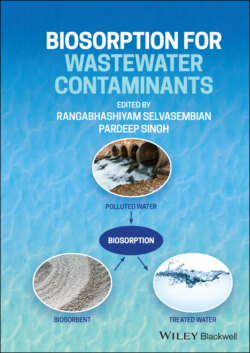Читать книгу Biosorption for Wastewater Contaminants - Группа авторов - Страница 27
Types of Biosorbents
ОглавлениеA wide range of materials available in nature can be used to remove metals from contaminated water resources as biosorbents. Biosorbents include microbial biomass (live and dead), plant and animal‐derived materials, industrial and agriculture byproducts, biopolymers, and so on. Biosorbents are a less expensive and more efficient way to remove metallic elements from aqueous solutions, especially heavy metals. Choosing the most effective biosorbent type from a wide range of promising and cheap biomaterials is a significant challenge. Biosorbents with the ability to bind metal ions with larger affinities should be developed. The ideal characteristics of biosorbent are (Macek and Mackova, 2011):
Biosorption ability
Economical
Ease of availability
Effortless removal of adsorbed metal ions and promising reuse of the biosorbents.
In the case of biosorbents, proteins, several polyphenols (e.g. chitosan and pectic acid), and polyphenols (e.g. tannins, catechins) are chemical ingredients that bind metal ions efficiently. By applying some easy chemical treatments to biosorbents with poor adsorption properties, the biosorbents can be transformed into adsorbents with outstanding adsorption qualities (Inoue et al., 2017).
